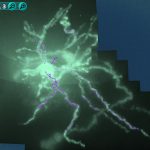 I’ve written a bit over the past year or so on the rise of games that are aimed not just to provide fun for the players, but also to help deliver some kind of social good to society too.
I’ve written a bit over the past year or so on the rise of games that are aimed not just to provide fun for the players, but also to help deliver some kind of social good to society too.
For instance Phylo was produced by McGill in a bid to increase the understanding of genetic research. Eyewire is a similar effort, this time produced by MIT, that aims to further understanding of neuroscience.
EteRNA is a game that explores the folding patterns of RNA, whilst NOVA is tackling a similar issue, but with the hope that it will get youngsters involved.
Charities have also got involved. Reverse the Odds is a game created by Cancer Research UK to help with the fight against the disease.
Or you have Nanocrafter, which has been created by researchers at the University of Washington to help further understanding of synthetic biology.
Gamifying neuroscience
The latest game of this ilk comes from the University of Washington, where researchers have developed a game, called Mozak, which allows players to contribute towards neuroscience research.
“Mozak is a great opportunity for us to work with citizen neuroscientists to answer questions about the diversity of cell types that exist in the brain and help us reach our scientific goals much quicker,” the team say. ”It’s really exciting that regular people out in the world can, in a short period of time, be taught how to reconstruct neurons on the same level as experts who have been doing this a long time.”
As with other games of this ilk, the aim is for players to help classify things that would take researchers an awfully long time to do manually. Players will create 3D reconstructions of neurons from imaging data. They’re shown a volumetric image of the neuron and then tasked with tracing the visible branches of it, with feedback given in real-time as to their success or otherwise. As soon as a consensus appears among multiple players, the neuron’s shape is recorded.
The researchers reveal that the game has enabled them to reconstruct neurons around 3.6 times faster than current methods, with citizen scientists also more effective at tracing the shape of neurons than computers, who can only recreate around 20% of each neuron.
You can see the game in action via the video below, or sign up for free at the link above.